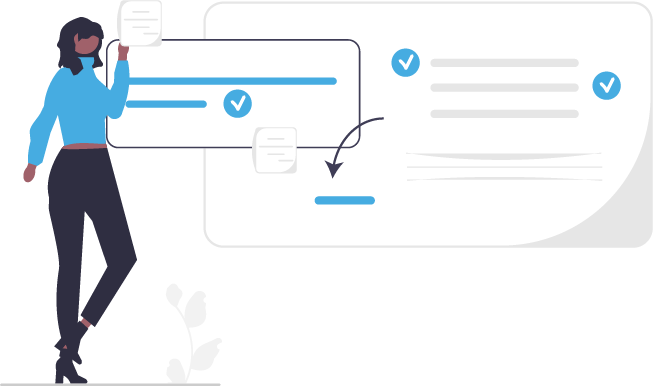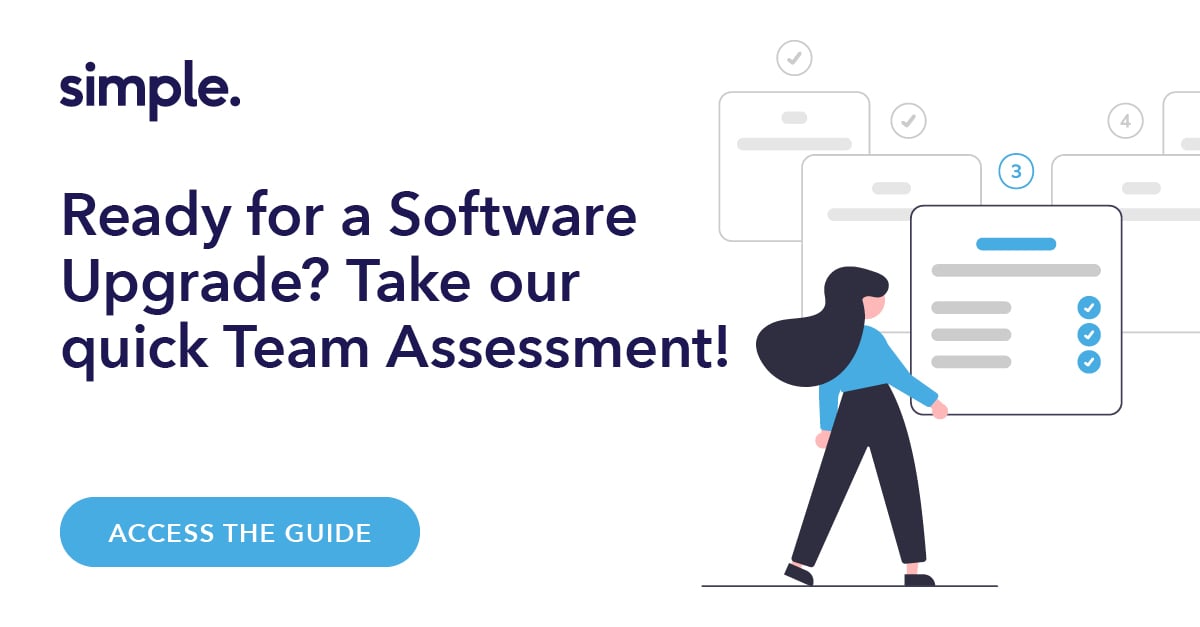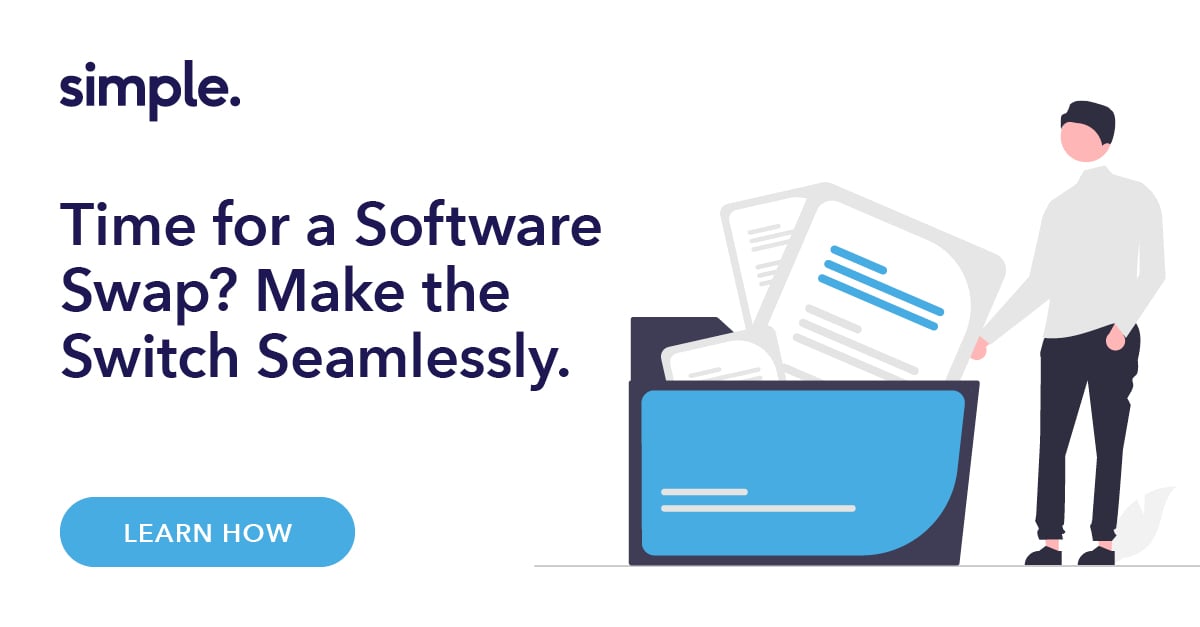Identifying When to Switch Your Marketing Project Management Software
By Jodie Byass
If you're pondering over the decision to upgrade your marketing project management software, rest assured, you're in good company. A significant finding from Capterra Management's User Research Report reveals that 44% of organisations have navigated through various project management solutions before settling on their final choice. The primary trigger for this transition? The lack of a comprehensive feature set in their former tools that could adequately cater to their operational needs.

Understanding that the journey to selecting a new software could span from six weeks to a few months, it's imperative to arm yourself with the right knowledge to make an informed choice for your next creative project management software. However, before we delve into the nuances of selecting a new tool, let's address some preliminary considerations you should make.
Is Your Current Software Not Cutting It?
Detecting the need for a new project management solution can be evident through several signs:
- Transparency Deficit: If your creative team and stakeholders are out of the loop about project statuses and remote access is non-existent, your current tool is inadequate.
- Vague Schedules and Priorities: Difficulty in identifying urgent tasks or an overwhelming influx of work due to poor visibility signals the need for a better solution.
- Resource Overstretch: Relying excessively on freelancers to meet project timelines because of thinly spread internal resources indicates a software shortfall.
- Workflow Approval Hiccups: Missing out on key stakeholder approvals or facing challenges in collating feedback due to version discrepancies points to a software inefficiency.
- Persistent Artwork Revisions: If your tool hasn't effectively reduced the number of artwork revisions, it's costing you time and resources.
- Missed Deadlines and Overblown Budgets: Regularly overshooting timelines and budgets is a clear indication your software isn't performing.
- Dissatisfied Stakeholders and Clients: Chaotic projects, delayed delivery, and compromised product quality suggest it's time for a software upgrade.
Switching Project Management Software: Things to Ponder
When the moment arrives to transition to a new marketing project management software, a structured approach is essential for a smooth changeover. Below are expanded strategies to guide you through this process:
1. Approach the Selection and Implementation with the Same Rigour as a Creative Project Treat the software selection and implementation process as if it were a high-stakes creative project. This means dedicating time to meticulous planning, scheduling, and budgeting. Develop a project plan that outlines key milestones, such as finalizing the software selection, completing data migration, and finishing user training. Assign a project manager to oversee this process, ensuring that timelines are adhered to and budget allocations are not exceeded. This structured approach will help mitigate risks and ensure a well-organized transition.
2. Engage Your Team and Stakeholders Early in the Process Early involvement of your team and stakeholders is crucial to the successful adoption of the new software. Organize workshops or meetings to discuss the change, focusing on how the new software will address current challenges and improve daily operations. Highlighting specific benefits that align with their roles can help in garnering support and enthusiasm for the switch. This early engagement also provides an opportunity to gather additional input on requirements, further refining your selection criteria.
3. Timing is Crucial for Switching Tools Selecting an optimal time for the software transition is critical. Avoid periods of high workload or major project deadlines to minimize disruption. Provide your team with a clear timeline of the transition process, including key dates for training sessions and the official switch-over to the new system. Adequate time for adaptation is essential, so consider a phased approach if possible, allowing users to gradually familiarize themselves with the new system before it becomes mandatory.
4. Strategize the Data Migration Process Data migration is often one of the most challenging aspects of switching software. Begin by conducting an audit of your current data to determine what needs to be transferred. Consider whether data cleaning or restructuring is necessary before migration to ensure compatibility with the new system. Explore automation tools that can facilitate the transfer process and reduce manual effort. Plan for a trial migration if possible to identify potential issues before the final transfer, and ensure you have a rollback plan in case of unforeseen problems.
Securing the Right Software This Time
Selecting the right project management software is paramount to improving your team's productivity and satisfaction. Here’s how to refine your approach:
1. Clearly Identify and List Your Needs Start with a thorough assessment of where your current system is lacking. Document both the big-picture issues and the specific day-to-day frustrations your team encounters. This list will form the basis of your search for a new solution, ensuring that you're looking for features that will make a tangible difference in your workflows and your software feature requirements will be met
2. Solicit Feedback from Your Team and Stakeholders Direct input from those who will use the software daily is invaluable. Conduct surveys, hold focus groups, or have one-on-one interviews to gather detailed feedback. This step will help ensure that the new system addresses everyone's needs and increases the likelihood of widespread adoption and satisfaction.
3. Prioritise Your Needs Not all features are created equal. Once you have a comprehensive list, identify which requirements are non-negotiable and which would be nice to have. This prioritization helps focus your search on solutions that cover your core needs, making the selection process more manageable.
4. Research and Compare Vendors Thoroughly Armed with your prioritized list of requirements, conduct in-depth research to identify potential vendors. Look beyond the marketing materials and seek out user reviews, case studies, and third-party evaluations. Shortlisting 3 to 5 vendors who best match your criteria will simplify your decision-making process.
5. Evaluate Each Option Through Demonstrations or Free Trials Hands-on experience with the software is crucial. Arrange for demonstrations or take advantage of free trials to see how each system performs in real-world scenarios. Involve a cross-section of your team in this evaluation to get a range of perspectives on each option's usability, functionality, and overall fit with your needs.
6. Prepare a Business Case if Needed For many organizations, securing the budget for new marketing project management software requires a compelling business case. This document should articulate the rationale for the change, including the benefits of the new system, the cost of implementation, and the expected ROI. Be sure to highlight how the new software addresses the shortcomings of the current system and the positive impact it will have on the agency’s operations and bottom line.
By considering these expanded strategies and approaches, you can navigate the complexities of switching to a new project management software with confidence, ensuring that your next choice is the right fit for your agency's needs and growth aspirations.

Maximising Your New Software's Potential
To fully leverage the benefits of your new project management software, implementing best practices from the outset is crucial. Here's how you can maximize its potential:
1. Appoint a Dedicated Champion Identify and empower a passionate advocate within your team who truly believes in the transformative power of the new software. This champion should have a deep understanding of both the software's capabilities and your organisation's needs. They will play a pivotal role in driving the adoption process, acting as a go-to resource for training, troubleshooting, and motivating others to embrace the change. Their enthusiasm and commitment can significantly influence the overall success of the software implementation.
2. Ensure Comprehensive Training is Provided A robust training program is essential for ensuring all users are competent and confident in using the new system. Tailor training sessions to accommodate different learning styles and job roles, ensuring that everyone understands how to utilise the software's features effectively. For team members unable to attend initial training, provide recorded sessions or arrange for additional live training opportunities. This inclusive approach helps prevent knowledge gaps and ensures widespread proficiency across your team.
3. Set a Definitive Adoption Deadline To facilitate a smooth transition, establish a clear deadline by which everyone needs to be using the new system exclusively. This deadline should allow sufficient time for training and adjustment to the new processes. Communicate this date well in advance, providing reminders as it approaches. A firm switch-over date reinforces the importance of the new software and helps ensure that the old system is phased out in a timely manner.
4. Regularly Monitor the Software's Performance After the software has been implemented, ongoing monitoring is key to identifying and addressing any issues promptly. Collect feedback from users regarding their experiences and any challenges they're facing. Utilize the software's analytics and reporting features to track its performance against your project management objectives. Regular check-ins allow you to make necessary adjustments and ensure the software continues to meet your agency's evolving needs.
5. Maintain Up-to-Date Training Materials As your team grows and changes, having a repository of training materials will streamline the onboarding process for new staff. Keep these resources—such as user guides, tutorial videos, and FAQs—current and easily accessible. Periodically review and update these materials to reflect any software updates or changes in your operational procedures. This proactive approach ensures that new team members can quickly become proficient, contributing to ongoing productivity.
Evaluating Your New Software's Impact
Assessing the impact of your new marketing project management software is crucial for validating its effectiveness and ensuring it delivers on its intended benefits:
1. Improved Transparency and Accessibility One of the immediate indicators of the software's success is enhanced visibility and accessibility of project information, allowing team members and stakeholders to monitor progress in real time from any location. This improvement should lead to better communication and collaboration across your projects.
2. Enhanced Planning and Resource Management The software should offer superior tools for planning and resource allocation, enabling a more efficient distribution of tasks and balancing of workloads. Effective resource management capabilities will manifest in smoother project execution and reduced instances of overwork or underutilisation.
3. Streamlined Approval Processes Look for a reduction in bottlenecks within the approval workflow, facilitated by the software's ability to streamline communication and feedback. Clear, efficient approval channels should speed up project timelines and reduce the risk of errors or misunderstandings.
4. Reduction in Artwork Revisions A notable decrease in the need for multiple revisions, thanks to better proofing and version control tools, indicates that the software is effectively supporting your creative processes. This should result in significant time and cost savings, as well as higher-quality outputs.
5. Achieving Project Deadlines and Budgets The ultimate measure of the software's impact will be observed in your ability to meet or exceed project deadlines and stay within budget more consistently. This efficiency gain reflects the software's effectiveness in enhancing project management practices across your agency.
6. Observing a Positive Shift in Team Morale and Client Satisfaction Finally, monitor the sentiment within your team and among your clients. An uplift in morale, reduced stress levels, and increased satisfaction with the project outcomes are strong indicators that the new software has been successfully integrated into your workflow.
By following these guidelines and consistently evaluating these key areas of impact, you can guarantee that your new project management software not only addresses the shortcomings of your previous system but also propels your team's project management abilities and creative achievements to new heights.


